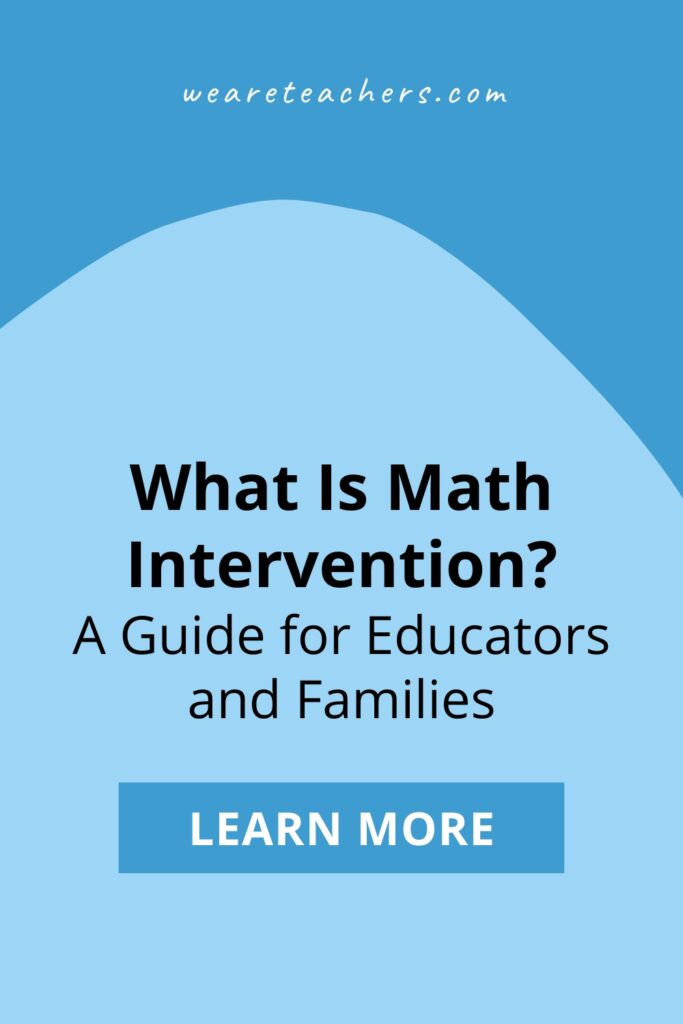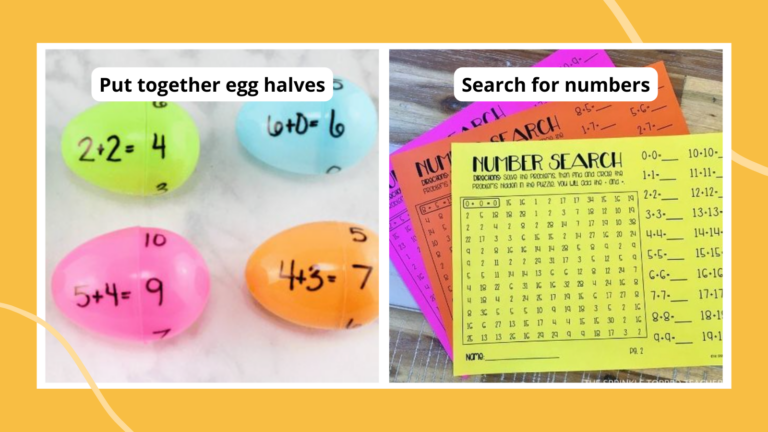Math intervention is instruction to help students who need extra support to master important math concepts. This could be supporting students who are two or three grade levels behind, or to address foundational math concepts. When it comes to intervention, what each student needs will be unique. One student may be working on fact fluency, while another may be working on representing fractions.
Math intervention is often part of a school’s (federally mandated) Response to Intervention (RTI) or Multi-Tiered Support (MTSS) process, meaning that schools will provide math intervention to students who need additional support to become proficient at math.
What math skills does math intervention address?
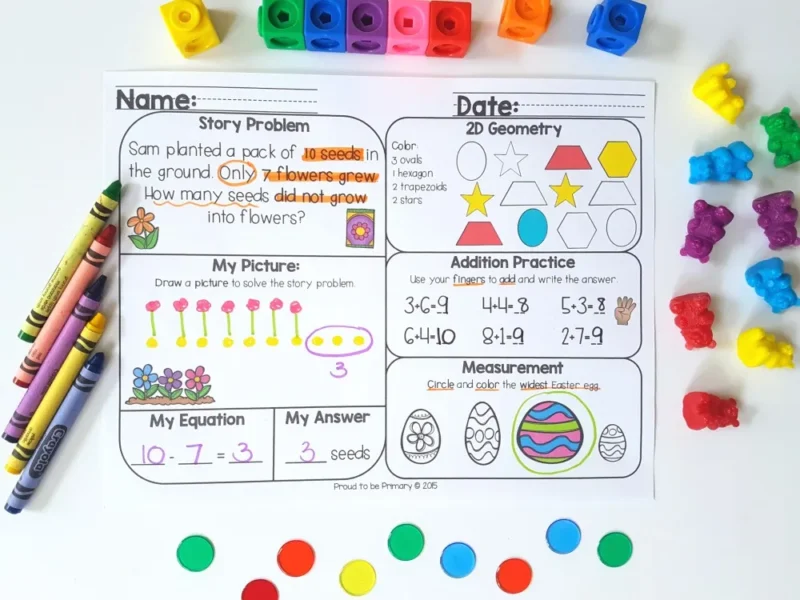
Math has strands of skills that students must master, and each strand has individual skills. The Achieve the Core (Common Core) strands are:
- Counting and algebraic operations
- Numbers and operations, including fractions
- Measurement and data
- Geometry
- Ratios and proportional relationships
- Expressions and equations
- Statistics and probability
- Algebra and higher math concepts (trigonometry, pre-calculus, calculus)
Achieve the Core has a detailed progression of the math skills that students should master.
Math intervention reteaches and reinforces any skill that a student isn’t proficient in. It’s based off of their mastery of grade-level standards. Students can excel or struggle with any combination of math concepts. For example, a child may do well with number sense but struggle with problem-solving.
OK, so what is math intervention?
Math intervention is additional instruction, often in a small group or one-on-one or using a computer program, to reteach and review important math concepts and skills. Effective math intervention first identifies the knowledge and skills that a student is missing. Then, it teaches them the concept using a variety of strategies that help the student grasp the concept. Finally, math intervention gives the student lots of practice with and feedback on the concept through problem-solving.
Watch as an interventionist explains math intervention:
How do we know which students need math intervention?
Math intervention is typically provided to students who are working two to three years below grade level. Teachers will use a universal screener, like the NWEA/MAP or iReady assessments, to figure out where students are working. Students who fall into the intervention range will be provided with a diagnostic assessment to figure out which skills to focus on first. The idea is to intervene and reteach skills from the most basic to the most complex.
Once students receive math intervention, teachers will use data to monitor progress and adjust intervention as needed.
So, a student may take a universal screener in the fall. Based on that universal screener, teachers see that the student is below grade level in, for example, number sense and operations. The student takes a diagnostic assessment and teachers determine that the student has deficits in number knowledge and basic operations. Then, they provide intervention and formative assessments along the way to monitor how the child is progressing. When the next benchmark assessment is given, the team can review whether or not the intervention is helping the student make the progress they’d expect.
What are math intervention programs?
In general, research is limited on how effective programs are at advancing students’ math skills. The determining factor is teacher professional development. When programs include lots of professional development, the outcomes are better. (Read more: Best Evidence Encyclopedia). That said, here are examples of math programs:
Bridges
Bridges is a curriculum for grades K-5 that incorporates problem-solving and number sense. This is a Tier 1 or Tier 2 program, meant for students who are making progress or who need a little extra support.
Learn more: Math Learning Center
MathLinks
MathLinks focuses on middle school math skills and supporting students who need remediation or reteaching in core concepts.
Learn more: Math and Teaching
Math Pathways and Pitfalls
Math Pathways and Pitfalls is a K-8 intervention curriculum that addresses number and numeracy, academic language, and core math concepts for K-3 and 4-8. Professional development is available.
Learn more: WestEd
SOAR Mathematics
SOAR Mathematics focuses on helping students understand, show, and explain math concepts.
Learn more: Institute for Learning
Online Programs
Some schools will use online math programs that are adaptive, meaning that they are developed to provide students with instruction (videos, lessons) and math practice that matches the skills they are working on. A program will use the information that students give it while working through each problem to provide the next problem, and the next, so that students are moving at their own pace. A student won’t move on to the next skill until they’ve gotten a certain number of problems correct, for example. Online learning platforms, including iReady, IXL, and Dreambox, all offer math platforms.
Watch the Not So Wimpy Teacher on how to help struggling students with math:
What are math intervention strategies?
There are a variety of ways that teachers can approach math intervention, through instructional strategies, metacognitive strategies, and research-based strategies.
Instructional strategies
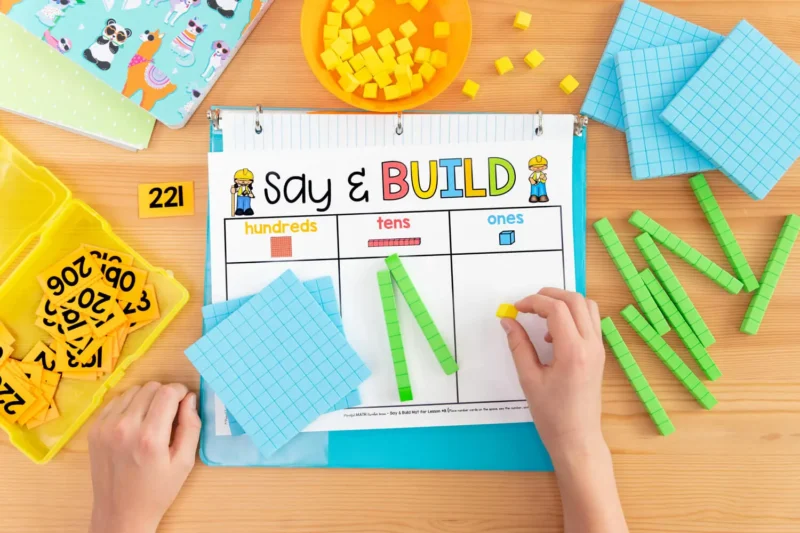
Learn more: Proud To Be Primary
Math intervention lessons should include:
- Hands-on methods: Math manipulatives like 3D shapes, cubes, number blocks, and other tools help students see and work with math concepts like amounts, number sense, and fractions.
- Direct or explicit instruction: Direct instruction provides a clear, scaffolded, step-by-step presentation of information with checks for understanding at each step along the way. It’s also paced so that students demonstrate mastery of one concept before moving on to the next.
- Scaffolding: Math intervention should move in small, manageable steps. Students learn and practice one skill to mastery before moving on to the next.
- Feedback: When students make mistakes, and when they complete a problem correctly, they need to know. Feedback that’s specific and corrective helps students develop knowledge of what to do, and ensures their practice is perfect.
- Small groups: Small group intervention, with a warm-up or review and a main activity and exit ticket, allows more time for students to get instruction, feedback, and opportunities for practice.
- Formative assessments: Students should be assessed on the target skills regularly, after each lesson or weekly, to ensure they are making progress.
- Repetition: Students need consistency to master math concepts. The more practice students get, the more a skill becomes automatic and they can incorporate it into the next concept.
Math interventions that work:
Visuals

Learn more: Vanderbilt IRIS Center
Visual models are another way to show students what’s happening when they’re adding or multiplying. Effective visuals in math can include:
- Number lines for number sense and counting skills
- Charts and graphs to show the relationship between numbers and show abstract concepts
- Illustrations to make number sentences or word problems more concrete
- Graphic organizers to show relationship between a number sentence and its representation
Watch an example of a math intervention lesson:
Metacognitive strategies
When students are stuck on where to start, metacognitive strategies can help.
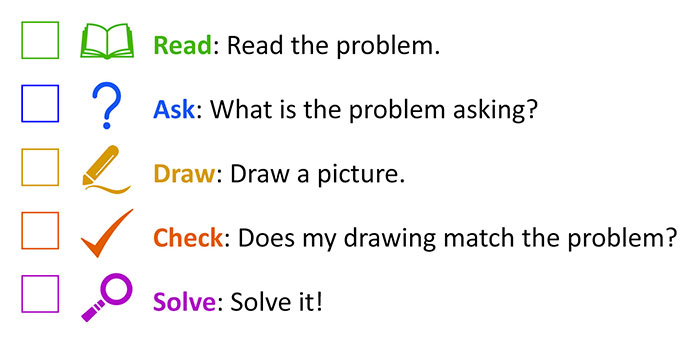
Self-monitoring: Talking through a problem can make sure students are completing each step. A checklist or list of questions can help students develop self-monitoring habits. Some questions they can ask themselves:
- What is the question asking me?
- Have I completed a problem like this before? How did I handle it?
- That didn’t work. What else can I try?
Read more about self-monitoring and performance feedback.
Learn more: Vanderbilt IRIS Center
Self-checking: Students may get to the end of a problem without knowing exactly what they did or where they went wrong. Help students develop the habit of checking their work regularly and monitoring their accuracy by teaching them to stop and ask:
- Does that look right?
- If I put my answer back into the problem, does it make sense?
- Have I made any mistakes?
Read more: Develop a self-monitoring checklist.
Think aloud: Thinking aloud or talking through how they solve a problem is helpful for students who need extra modeling. Thinking aloud is a way for teachers to demonstrate the metacognitive strategies and thinking that strong students do without verbalizing.
More Research-Based Strategies
Cover-Copy-Compare
When students are working on math fact fluency, cover-copy-compare is a way to study and practice facts. Students study a list of facts, then, when they’re ready, they cover the problems and try to answer each one. They repeat the procedure until they get every problem correct.
Watch a video about cover-copy-compare:
Read more about cover-copy-compare.
Peer-Assisted Learning Strategies (PALS)
Using PALS, high-ability students are partnered with those who need extra support. Then, students work together for 20 to 30 minutes a few times per week. One student is the “coach” and one is the “player.” The coach models how to solve the problem, thinking aloud as they go. Then, the player works through another problem, thinking aloud. Finally, they each do a problem on their own. This gives students a chance to think aloud and get feedback from a peer.
Use Mnemonic Devices
Mnemonic devices can help students remember procedures to solve problems. For example, FAST DRAW:
- Find what you are solving for: Look at the question mark and underline what you are solving for.
- Ask yourself what information is given: Read the problem and look for what is already provided.
- Set up the equation: Write the equation with numbers and symbols.
- Tie down the equation: Say out loud what the operation is and what it means. Draw pictures if that’s helpful.
- Discover the sign. Find the sign and say it out loud.
- Read the problem out loud.
- Answer the problem.
- Write the answer to the problem.
Having a mnemonic device like FAST DRAW can help students get started and have a process for working through math problems.
How can I help a struggling student at home?
When students get intervention at home, they may not want to do more math at home. But there are ways to reinforce math concepts and support students with homework.
One way you can help your kids at home is to talk about math. When you see numbers (on the road, at the grocery store, on the laundry machine), talk about what the numbers mean and how you use them.
Watch more ideas on how to help children with homework:
Is math intervention special education?
In short, no. But math intervention is provided to students that a school thinks may have a learning disability. And based on the data collected during the intervention, if the student is found eligible for special education services, then math instruction may continue as part of the child’s Individualized Education Plan.
Read more: What is special education?
Resources for Math Intervention
Best Evidence Encyclopedia has reviews of math interventions that have research to support them.
Intervention Central has information about math strategies and approaches.
What Works Clearinghouse from the Institute of Education Science has searchable reviews of research on math, like this guide on assisting students struggling with math in the elementary grades.
How do you manage math intervention? Share in our WeAreTeachers HELPLINE group on Facebook.
Get more math games for practicing fact fluency.
